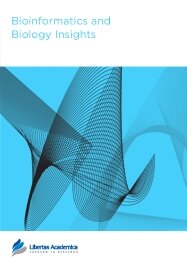

Publication Date: 21 Nov 2012
Type: Original Research
Journal: Bioinformatics and Biology Insights
Citation: Bioinformatics and Biology Insights 2012:6 275-286
doi: 10.4137/BBI.S7977

Bacillus species form an heterogeneous group of Gram-positive bacteria that include members that are disease-causing, biotechnologically-relevant, and can serve as biological research tools. A common feature of Bacillus species is their ability to survive in harsh environmental conditions by formation of resistant endospores. Genes encoding the universal stress protein (USP) domain confer cellular and organismal survival during unfavorable conditions such as nutrient depletion. As of February 2012, the genome sequences and a variety of functional annotations for at least 123 Bacillus isolates including 45 Bacillus cereus isolates were available in public domain bioinformatics resources. Additionally, the genome sequencing status of 10 of the B. cereus isolates were annotated as finished with each genome encoded 3 USP genes. The conservation of gene neighborhood of the 140 aa universal stress protein in the B. cereus genomes led to the identification of a predicted plasmid-encoded transcriptional unit that includes a USP gene and a sulfate uptake gene in the soil-inhabiting Bacillus megaterium. Gene neighborhood analysis combined with visual analytics of chemical ligand binding sites data provided knowledge-building biological insights on possible cellular functions of B. megaterium universal stress proteins. These functions include sulfate and potassium uptake, acid extrusion, cellular energy-level sensing, survival in high oxygen conditions and acetate utilization. Of particular interest was a two-gene transcriptional unit that consisted of genes for a universal stress protein and a sirtuin Sir2 (deacetylase enzyme for NAD+-dependent acetate utilization). The predicted transcriptional units for stress responsive inorganic sulfate uptake and acetate utilization could explain biological mechanisms for survival of soil-inhabiting Bacillus species in sulfate and acetate limiting conditions. Considering the key role of sirtuins in mammalian physiology additional research on the USP-Sir2 transcriptional unit of B. megaterium could help explain mammalian acetate metabolism in glucose-limiting conditions such as caloric restriction. Finally, the deep-rooted position of B. megaterium in the phylogeny of Bacillus species makes the investigation of the functional coupling acetate utilization and stress response compelling.
PDF (863.76 KB PDF FORMAT)
RIS citation (ENDNOTE, REFERENCE MANAGER, PROCITE, REFWORKS)
BibTex citation (BIBDESK, LATEX)
XML
PMC HTML

Recently we have published a review on sRNA prediction in bacteria. Submission and processing is fast and very fair in Bioinformatics and Biology Insights. I have received emails at every stage of the review process until decision making. The experts' comments and suggestions has helped us to improve the manuscript. Because of the indexing and high visibility of the article in BBI we expect to receive a high number of citations. ...
Facebook Google+ Twitter
Pinterest Tumblr YouTube